Freezer-friendlySous VideGluten-FreeFish
Sous Vide Teriyaki Salmon! This is an easy freezer meal, plus it makes the most tender, tastiest fish EVER. (And NO fishy aromas!) Simple teriyaki marinade with soy sauce, brown sugar, rice vinegar, garlic, and ginger.
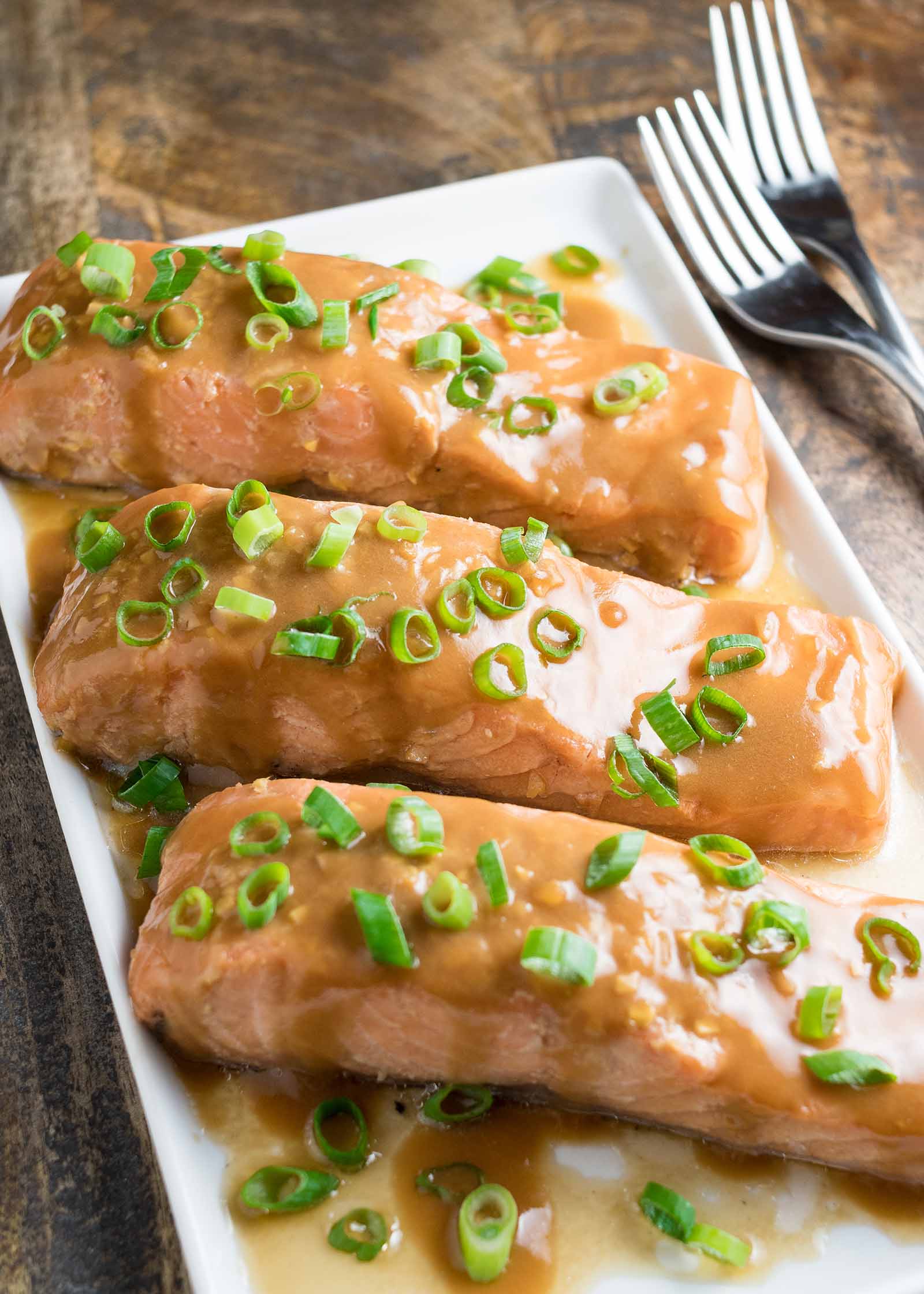
After cooking salmon sous vide, I am convinced that this is the only way that salmon — and all fish, really — should be cooked. Period. Full stop. Forever and ever. For reasons which will shortly become clear.
But perfectly cooked salmon isn’t the only thing this recipe has going for it. No, the otherattraction is that this sous vide recipe makes an outstanding freezer meal. Having a few of these teriyaki salmon fillets prepped in the freezer and ready to cook sous vide is a lifesaver on nights when other dinner plans go awry.
NEW TO SOUS VIDE COOKING? START HERE
- Everything You’ve Been Wondering About Sous Vide Cooking at Home
- How to Use Your New Sous Vide Immersion Circulator
- How to Seal Foods Without Using a Vacuum Sealer
- Sous Vide and Food Safety: What to Know

What’s So Great About Sous Vide Salmon?
Okay, let’s start with what I’ve disliked up until now with my relationship with fish: dry crusty edges, undercooked middles, inconsistent results no matter what technique I use, and the all-consuming fear of screwing up an expensive piece of fish.
Preparing those very same fish fillets sous vide is a game-changer — a term that I don’t use lightly.
Cooking sous vide means that the fish is submerged in water and cooks at a single, steady temperature the entire cooking time. This is important because it means that every part of the fish cooks exactly the same, and it won’t overcook because the fish physically can’t get any hotter than the temperature of the water around it.
And this is important because it means perfectly cooked fish from end to end, inside and out, thin bits and thick bits. No overcooked edges or undercooked middles. Just supremely flaky, buttery, silky fish.
It’s hard to truly communicate to you the lusciousness of this sous vide fish without you trying it for yourself. It flakes into pieces under your fork, but it’s also so soft that it practically melts on your tongue. It reminds me of the texture of silken tofu — the way it’s so smooth and tender that it’s almost creamy. You have to try it to believe it.

Make It a Freezer Meal
Now let’s talk about the other aspect of this technique: how well it works as a freezer meal. How is this? Because another advantage of cooking sous vide is that you can cook foods while they’re still fully frozen. You freeze and cook the salmon in the same freezer bag. I love it.
Let’s say you find some salmon on sale, or you know you have a particularly busy few weeks coming up, or you just want to stash a few fillets away for emergency weeknight dinners. Bundle up your fillets in their own personal freezer bags, stash them in the freezer, and pull them out whenever you need an easy meal, no thawing or pre-planning required.
This works because the temperature of a sous vide water bath is so steady and the food cooks so quickly. The fish cooks nearly as fast as it thaws, and no part is ever in a temperature danger zone long enough for there to be any food safety risk. Nifty, right?

Teriyaki Sauce for Sous Vide Salmon
Sous vide salmon needs little more than salt, pepper, and olive oil to transform itself into a delicious dinner, and if this is what you’re into, then I say go for it.
But if you want to perk things up a bit, I highly recommend this teriyaki version. It’s a simple teriyaki marinade, made with just soy sauce, brown sugar, rice vinegar (or white wine vinegar), garlic, and ginger, and it adds a sweet-salty-tangy flavor to the fish. Add a few tablespoons to the bag along with your salmon fillet and you’re set.
From there, you can cook the fillets right away or freeze them for up to 3 months. Even if you’re planning to cook the fillets within a day or two, I’d still recommend sticking them in the freezer so they don’t over-marinate, plus then you don’t need to worry if your plans change and you don’t get around to making your lovely fish dinner.

The Best Temperature for Sous Vide Salmon
I like to cook this salmon at 122°F for silky, very tender salmon. If you prefer your salmon more firm and flaky, cook it at 130°F.
At either temperature, cook the salmon for about 40 minutes if cooking fresh (unfrozen) salmon, or 70 minutes for frozen salmon. Salmon can be left in the sous vide bath for up to 30 minutes after the end of cooking without significant change in flavor or texture (after 30 minutes, it starts to get a little mushy).
I use the Joule smartphone app from ChefSteps to set the temperature and cooking time for my salmon, which syncs with their Joule immersion circulator. It’s worth noting that even if you have a different immersion circulator, you can still use the Joule app to calculate temperature and cooking time for your sous vide meals. It’s really a very handy app with lots of basic sous vide recipes and helpful step-by-step tutorials.
Curious to give sous vide a try? Check out the Joule immersion circulator from ChefSteps. (I love mine!)
What to Serve with Teriyaki Salmon
I recommend serving this salmon with some simple white rice and some stir-fried vegetables on the side.
If you have leftovers, you can reheat them briefly in the microwave, or flake the salmon into pieces to make salmon cakes, a topper for leafy green salads, or a riff on tuna salad sandwich.
More Great Sous Vide Recipes!
- Sous Vide Steak
- Sous Vide Korean BBQ Chicken
- How to Cook Asparagus Sous Vide
- Sous Vide Cheesecake in Jars
- Sous Vide French Dip Sandwiches
Updated January 7, 2020 : We spiffed up this post to make it sparkling, adding some new serving suggestions and updated cooking temperature recommendations. No significant changes to the original recipe. Follow me on Pinterest  Save It Print
Save It Print
Sous Vide Teriyaki Salmon Recipe
- Prep time: 10 minutes
- Cook time: 40 to 70 minutes
- Yield: 4 servings
Ingredients
- 1 1/2 to 2 pounds salmon or salmon fillets, 1-inch thick
- 3 cloves garlic, minced (about 4 teaspoons)
- 1-inch piece ginger, peeled and minced (about 4 teaspoons)
- 1/4 cup soy sauce or gluten-free tamari
- 1/4 cup water
- 2 tablespoons brown sugar
- 2 tablespoons rice vinegar or white wine vinegar
- 1/2 to 2 teaspoons cornstarch, for thickening the sauce
- Sliced green onions or chopped cilantro, to serve
- The Joule or other sous vide immersion circulator
- Quart-sized freezer bag (I use Ziploc)
Method
1 Get ready: Pull out 4 freezer bag, and label each bag with the recipe and the basic cooking instructions (you'll thank me for this later when you're trying to remember which recipe to follow!). Flip the zip-top edge of the bag outward, forming a cuff around the bag. This helps the bag stay open and upright.
Fill a large bowl or stock pot with 4 or 5 inches of water. Lay out a kitchen towel.
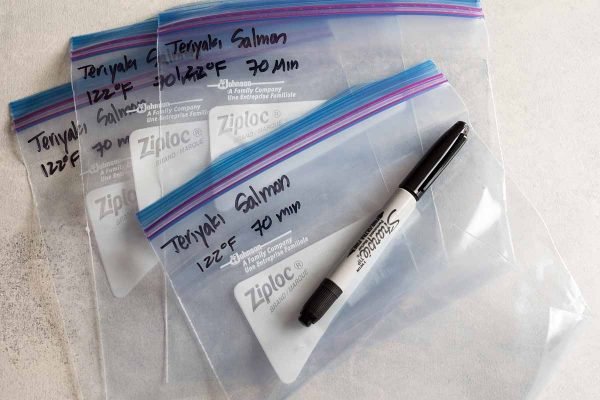
2 Make the teriyaki marinade: Whisk together the soy sauce, water, brown sugar, and vinegar for the marinade.
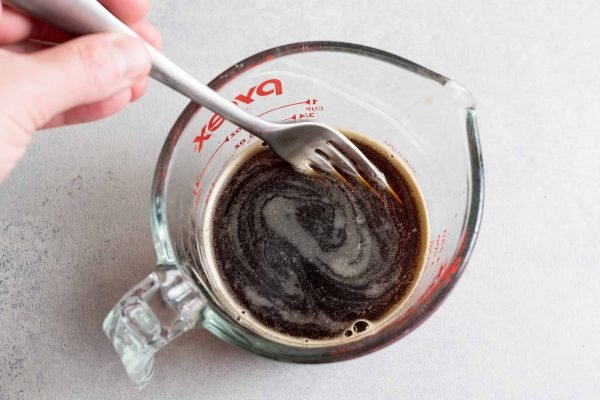
3 Cut the salmon into 4 portions (if not already done). Aim for equal portions, though it's fine if they are different shapes. If you're buying at fish counter, you can also ask the person at the counter to do this for you.

4 Season the salmon: Divide the garlic and ginger between the fillets (about 1 teaspoon of each per fillet). Use your fingers to spread the garlic and ginger evenly over the surface of the salmon. This step helps them stick to the surface of the salmon after the teriyaki marinade is added.
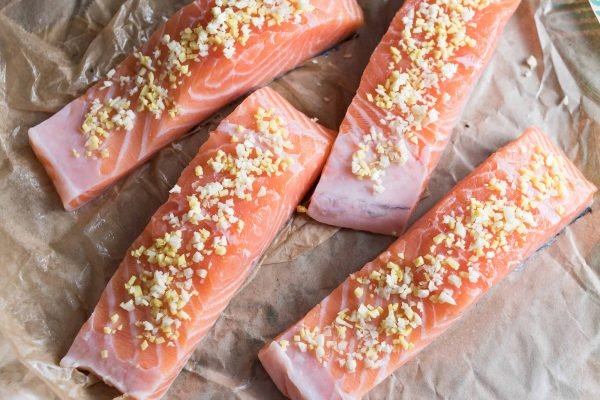
5 Transfer the salmon to freezer bags: Slide one fillet into each bag. Usually the fillets fit in the bottom of the bag (as pictures), but it's fine if they are sideways.

6 Add the marinade and seal the bag: Holding the bag upright, add about 3 tablespoons of marinade to the bag. Flip the cuff back up and seal the bag almost closed, leaving about an inch un-zipped.
Holding the bag by the unzipped portion, submerge the bag in the pot of water. Use your other hand to gently press out any air pockets from around the salmon. Lower the bag right up to the unzipped portion so that all the air bubbles are forced out, then pinch the bag closed.
Lift the bag out of the water; the plastic should hug the sides of the salmon, pressing right up against the fish. If it doesn't, or if you see any big air bubbles around the salmon, repeat sealing the bag. (Read more here.)
Transfer the bag to the kitchen towel and pat dry. Repeat with adding the marinade and sealing the remaining freezer bags of salmon.
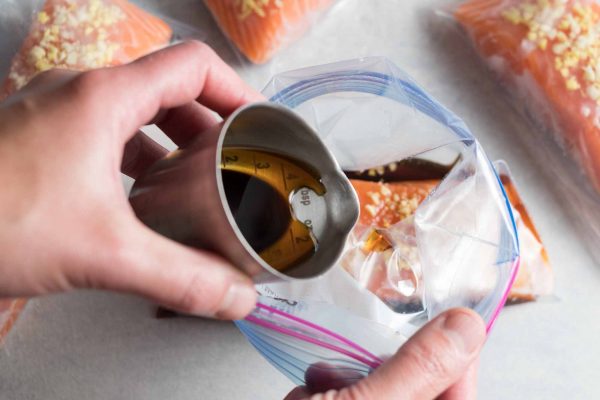

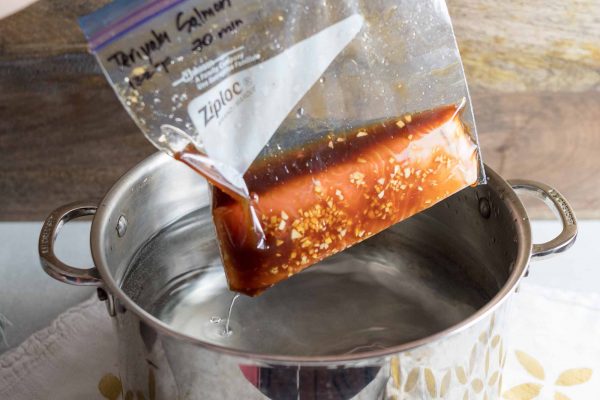

7 Cook or freeze the salmon: If desired, skip to the next step and cook the salmon right away. Otherwise, freeze the salmon overnight or up to 3 months. The marinade will become opaque but may not completely solidify; this is normal. Even if you plan on eating the salmon within a few days, I'd recommend freezing it so that the fish doesn't over-marinate.

8 When ready to cook, heat the sous vide bath: Fill a large pot with at least 6 inches of water. Add the Joule (or other sous vide device) and heat the water to 122°F for silky, very tender salmon, or to 130°F if you prefer your salmon more firm and flaky.


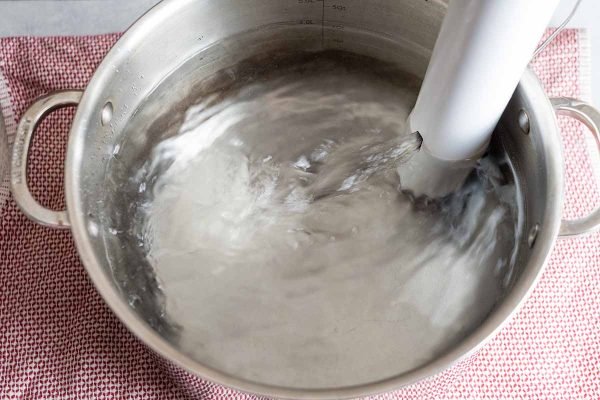
9 Cook the fish: Once the sous vide bath is heated, add as many salmon fillets as you'd like to cook. (Do not thaw frozen salmon.) It's fine if the tops of the bags poke out from the surface of the water, but the salmon itself should be completely submerged. Add additional water if needed to cover.
Cook fresh (unfrozen) salmon for about 40 minutes, or cook frozen salmon for 70 minutes (the cooking time is the same whether cooking at 122°F or at 130°F). Salmon can be left in the sous vide bath for up to 30 minutes after the end of cooking without significant change in flavor or texture (after 30 minutes, it starts to get a little mushy).
When done, pull all the bags from the water and lay them on a kitchen towel. Pat the bags dry.
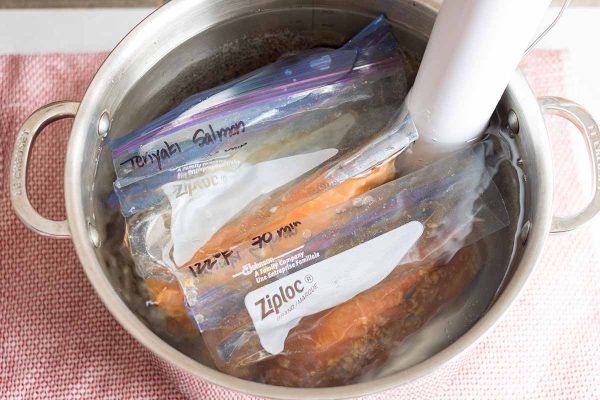
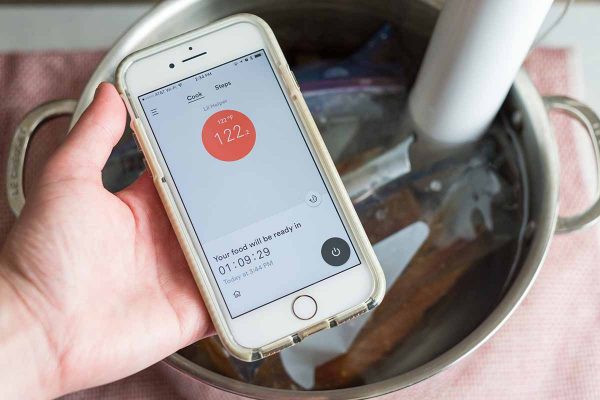


10 Make the teriyaki sauce: Holding the bag over a microwave-safe measuring cup, snip one of the corners of the bag and empty the teriyaki marinade into the cup. Add water as needed so that you have 1/4 cup of liquid for every salmon fillet you have prepared. Whisk in 1/2 teaspoon of cornstarch for every 1/4 cup of liquid.
Microwave on high in 30 second bursts, whisking between each burst, until the sauce thickens and bubbles around the edges (about 30 seconds for each quarter cup). If it doesn't seem to be thickening, whisk in another 1/4 teaspoon of cornstarch for each 1/4 cup and continue heating.
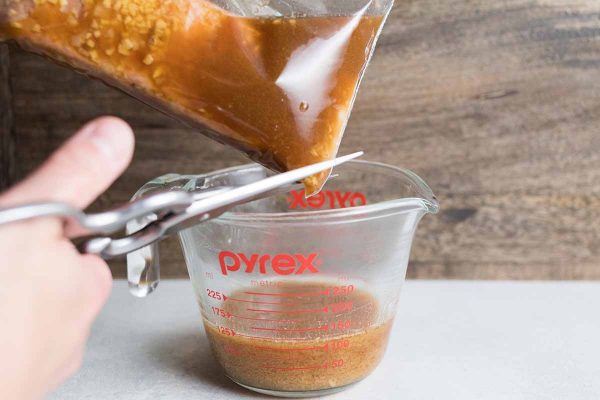
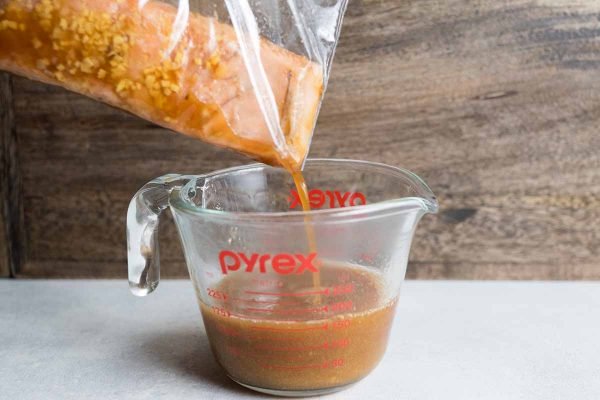

11 Serve the salmon: While the sauce is heating, slide each salmon fillet out of its bag and onto a plate. If you'd like crispy skin (optional), warm a tablespoon of oil in a large skillet over medium-high heat and sear the salmon, skin-side down, for a few minutes or until the skin is browned and crispy.
Transfer each fillet to a plate, drizzle each one with sauce, and sprinkle with sliced green onions or chopped cilantro. Serve warm.
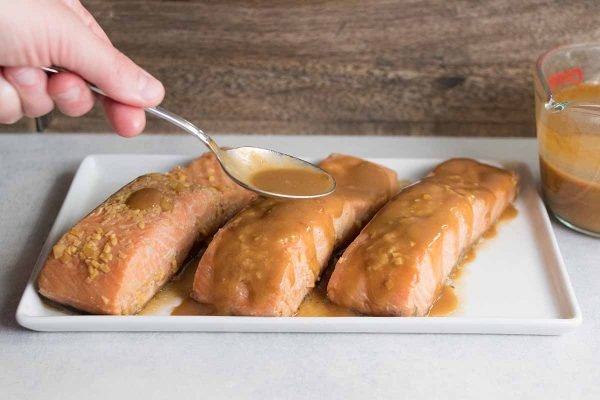

Hello! All photos and content are copyright protected. Please do not use our photos without prior written permission. Thank you!
Products We Love

Joule Immersion Circulator
$199.95 on Amazon Buy
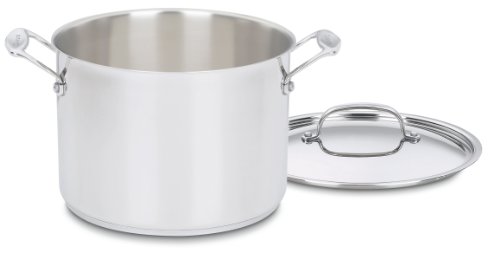
Cuisinart 8-quart Stockpot with Lid
$41.61 on Amazon Buy
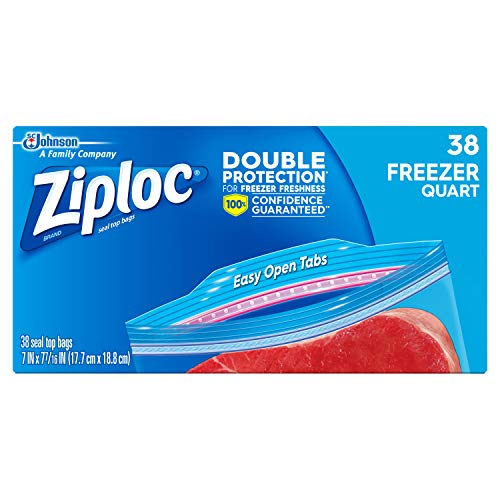
Ziploc Quart Freezer Bags
$13.98 on Amazon Buy
This post may contain links to Amazon or other partners; your purchases via these links can benefit Simply Recipes. Read more about our affiliate linking policy.
 Emma Christensen
Emma Christensen
Emma Christensen is the Editor-in-Chief of Simply Recipes, and has over 10 years of experience creating food and content for web and print. She was formerly the recipe editor for The Kitchn and is the author of three books on home-brewing, True Brews, Brew Better Beer, and Modern Cider. Emma is a graduate of The Cambridge School for Culinary Arts and Bryn Mawr College. She lives in San Jose, California.
More from Emma







